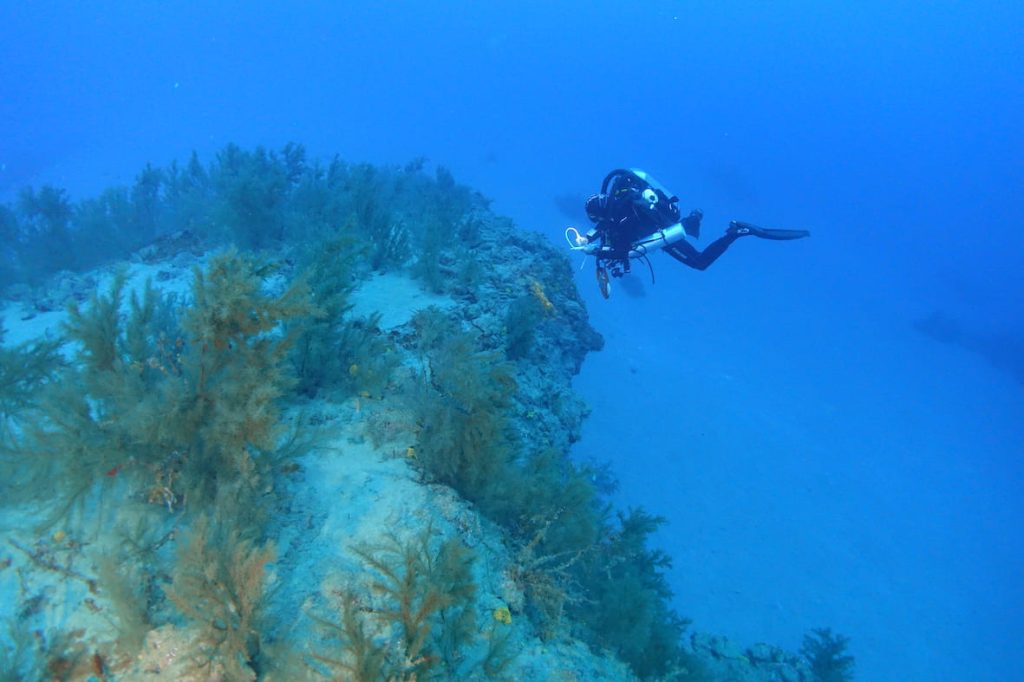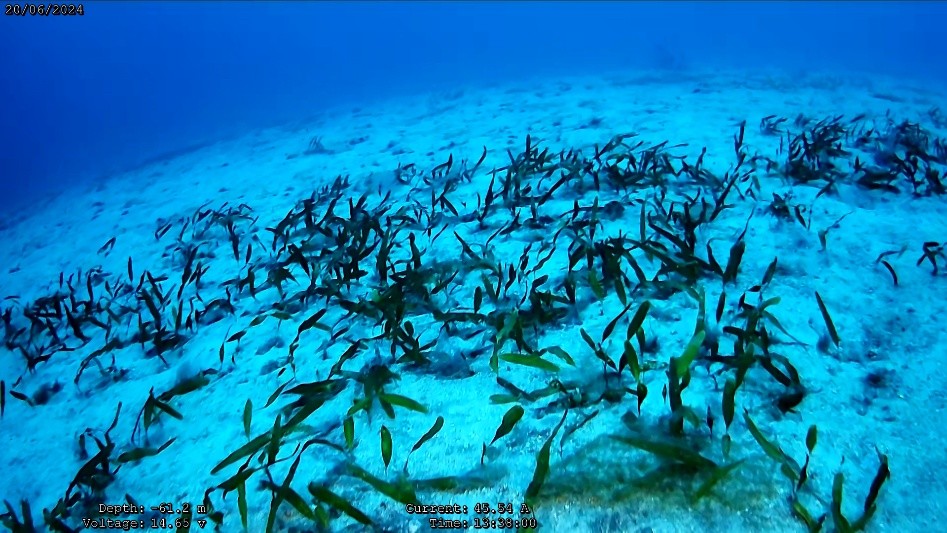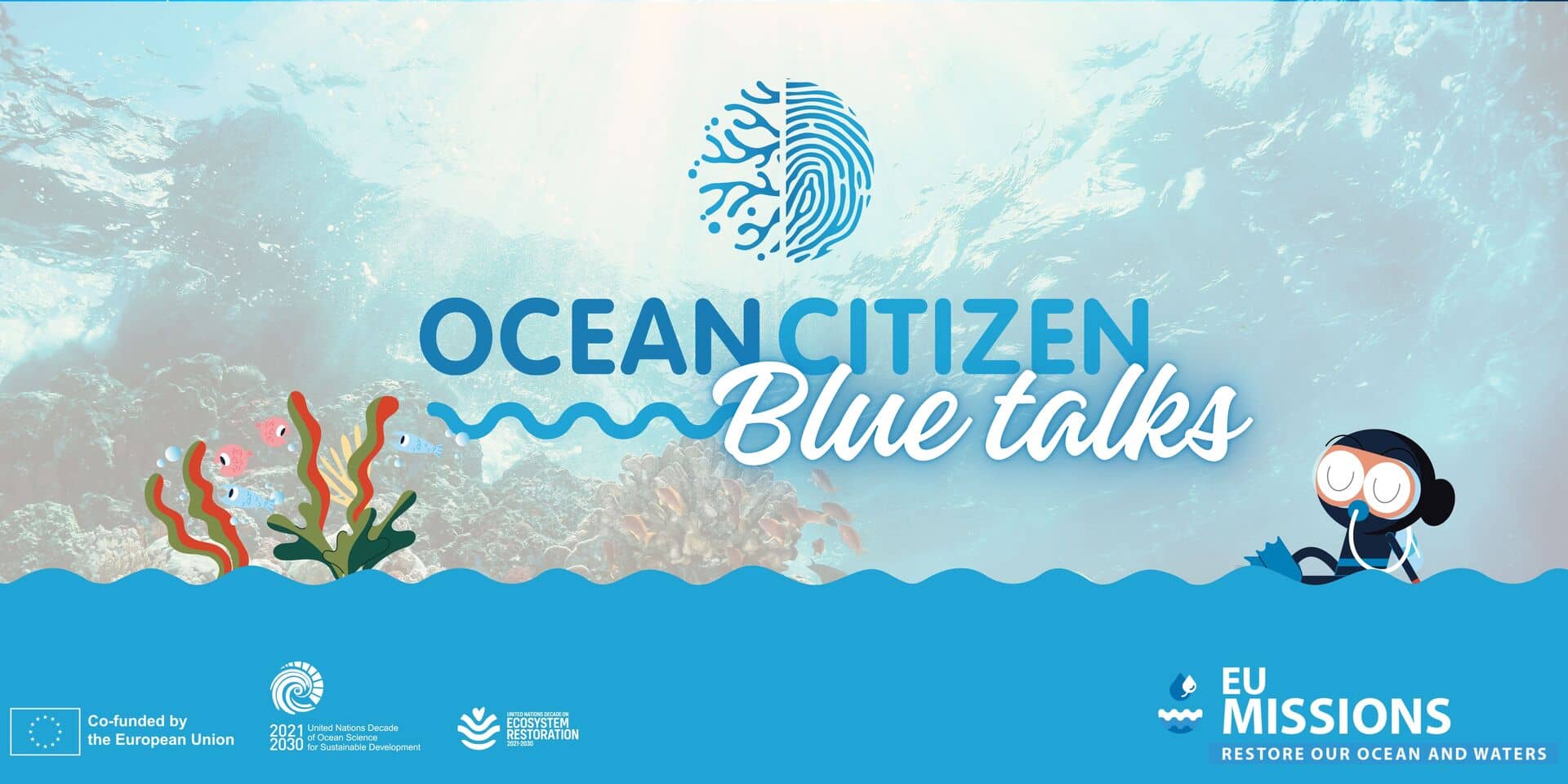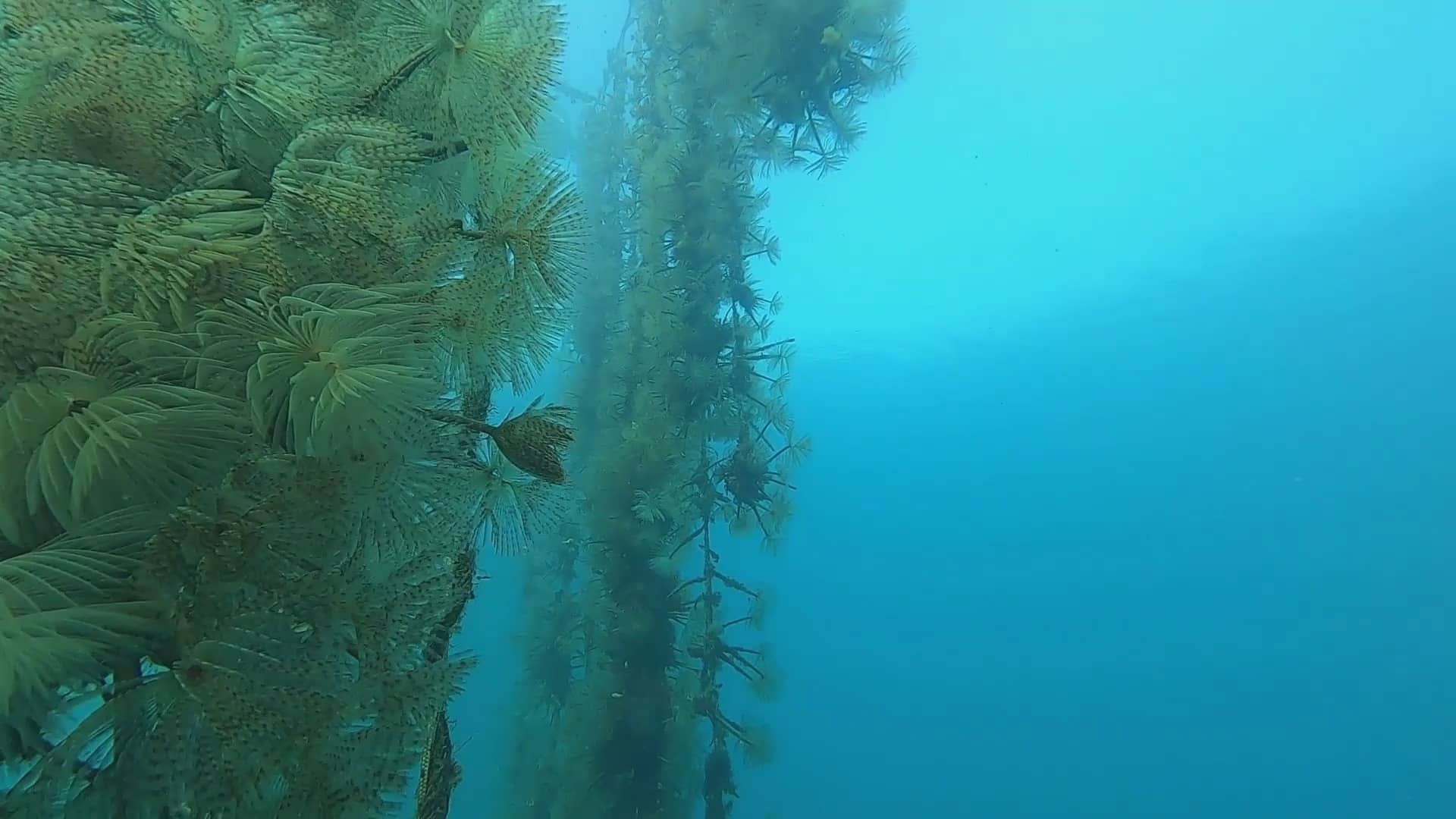Antipathella wollastoni. Photo credits: Fernando Espino
by Francisco Otero-Ferrer
Universidad de Las Palmas de Gran Canaria (ULPGC)
The black coral Antipathella wollastoni is a slow-growing and long-lived coral species found on hard, rocky substrates and vertical or steep reef faces across the Macaronesian region, including the Azores, Madeira, and the Canary Islands. With its dark, flexible skeleton and branching form, it creates small underwater forests that provide structure and shelter for other organisms. In Punta Blanca, in southern Tenerife, this coral is usually found in the mesophotic zone, between roughly 60 and a few hundred metres depth, where light is scarce.
A. wollastoni plays an essential ecological role. Its colonies, which sometimes reach 2 m in height, act as three-dimensional structures that enhance local biodiversity, providing refuge for small demersal fish, crustaceans, and many epibionts (sponges, bryozoans, hydroids) that settle on its branches. These organisms are commonly referred to as habitat-forming species. They also contribute to benthic–pelagic coupling by intercepting particles from the water column. These biotic interactions increase local biodiversity and contribute to the functional complexity of mesophotic communities.

Black coral forest. Photo credits: Álvaro Roldán
However, these fragile ecosystems face multiple threats. Key threats include bottom-contact fishing (like trawls or lost fishing gear) and other physical disturbances that can easily break or remove colonies, increased sedimentation and coastal runoff, targeted or incidental collection, new seabed uses such as mining or cable laying, and climate-related changes like shifting currents and ocean acidification. Because these corals grow so slowly, repeated disturbances can cause long-term population declines.
To address these challenges and explore solutions, OCEAN CITIZEN has initiated a pilot-scale restoration of Antipathella wollastoni in Punta Blanca. Artificial structures will be deployed near existing wild reefs, carefully designed to match the physical, chemical, and biological conditions of the species’ natural habitat. Using complementary restoration techniques—ranging from the assisted attachment of coral fragments to habitat-mimicking substrates—the project is evaluating which approaches maximise survival, growth, and recruitment. The goal is to develop a practical, science-based tool that can be scaled up and transferred to other sites, contributing to the recovery and long-term safeguarding of mesophotic black coral gardens.
By advancing this work, OCEAN CITIZEN highlights the ecological importance of Antipathella wollastoni and the need to conserve the habitats it creates. Protecting them is therefore vital, as their slow growth makes natural recovery difficult and prevention more effective than large-scale restoration. If protected, these corals can persist for decades or even centuries, continuing to provide refuge and nursery grounds for countless species.




